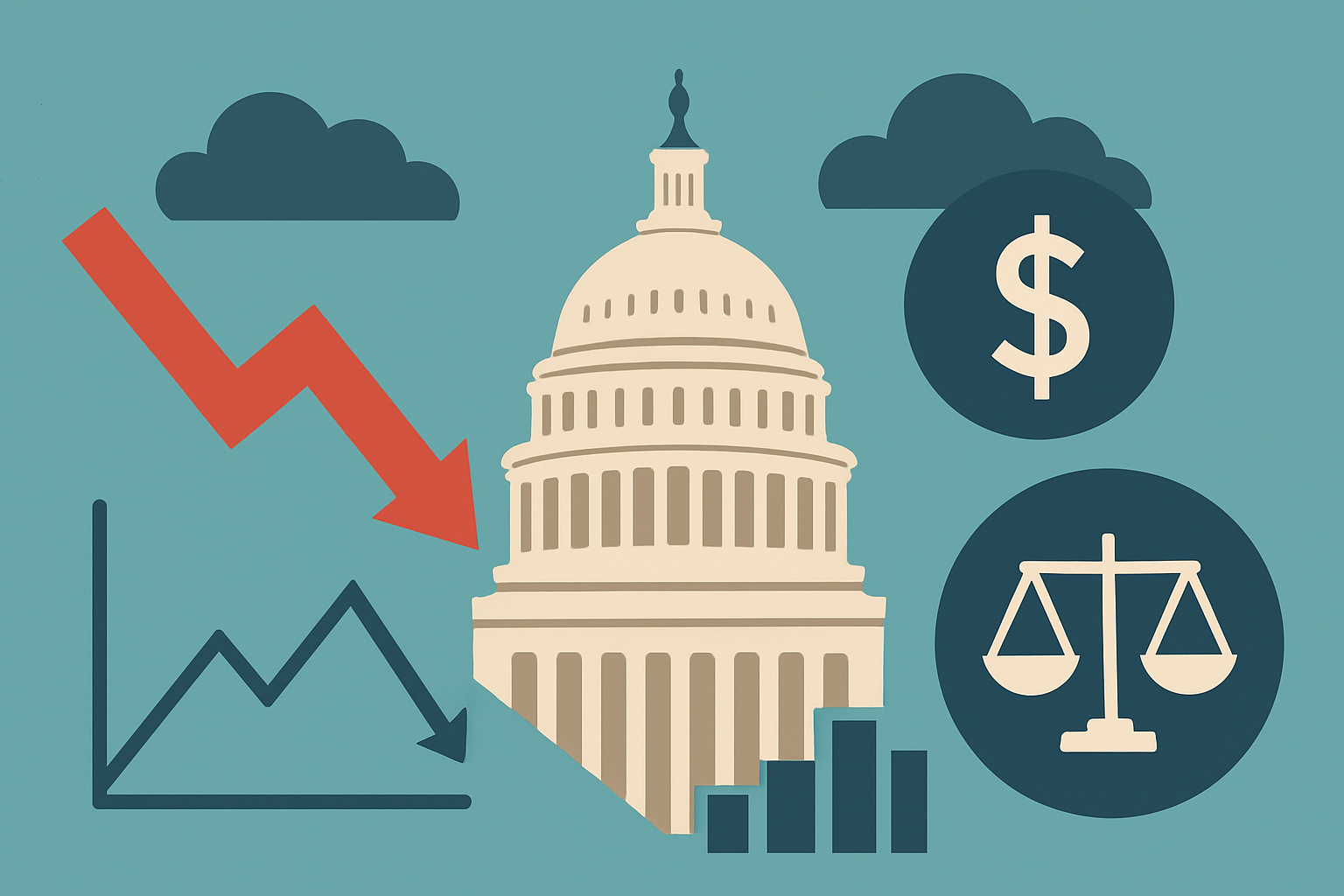Markets are once again holding their breath as Washington edges closer to a potential government shutdown. With negotiations in Congress stalled, the looming risk threatens not just political stability but also market sentiment, consumer confidence, and the fiscal outlook. Investors are bracing for heightened volatility across equities, bonds, and risk assets as gridlock intensifies.
Why This Matters for Investors
A government shutdown, while historically temporary, can have disproportionate effects on markets. Analysts at Reuters and Bloomberg warn that prolonged legislative stalemates could weigh on the U.S. economic outlook by slowing federal spending, delaying paychecks for government employees, and undermining consumer sentiment.
Bond markets are already showing signs of strain. Yields on short-term Treasuries—often the first instruments to react to political gridlock—have ticked higher as investors demand compensation for uncertainty. Meanwhile, equities tied to government contracts, particularly defense, infrastructure, and healthcare names, face increased earnings risk if budgets stall.
Historical Precedent and Market Behavior
The last major shutdown in 2018-2019 lasted 35 days—the longest in U.S. history—and cost the economy an estimated $11 billion in lost output, according to the Congressional Budget Office (CBO). While markets ultimately recovered, near-term volatility spiked, and consumer confidence dipped sharply.
This time, with inflation still sticky and monetary policy restrictive, the risks could be more acute. As Moody’s Analytics recently noted, a shutdown would compound fiscal uncertainty at a time when the U.S. is already managing elevated debt issuance and rising borrowing costs.
Sector Implications
- Defense & Contractors: Government suppliers face delayed payments, potentially weighing on Q4 earnings visibility.
- Consumer Confidence: Households reliant on federal programs could see delayed benefits, dragging discretionary spending.
- Bond Markets: Short-term Treasuries may face dislocation, while long-dated bonds could see safe-haven demand.
- Equities: Defensive sectors like utilities, healthcare staples, and dividend payers may outperform as investors seek shelter.
Future Trends to Watch
- PCE Inflation Report: Any hot print could intensify the market’s sensitivity to political uncertainty, adding pressure to the Fed’s balancing act.
- Safe-Haven Flows: Watch for rotations into gold, Treasuries, and cash alternatives if shutdown risks materialize.
- Regulatory Delays: Prolonged shutdowns disrupt not only spending but also oversight—potentially delaying approvals in industries such as energy, mining, and technology.
Key Investment Insight
For investors, the path forward demands flexibility. Position sizing, cash buffers, and liquidity planning are essential in navigating potential shocks. Those with exposure to government-dependent sectors should prepare for earnings disruptions, while portfolios tilted toward defensives may offer resilience. Ultimately, legislative gridlock amplifies near-term risks, and the ability to adapt will define winners and losers in the weeks ahead.
Political risk may not be a new variable for investors, but its impact on today’s inflation-sensitive and valuation-rich markets makes it especially critical to monitor. Stay ahead of these developments with MoneyNews.Today, your trusted source for market-moving insights and analysis.





